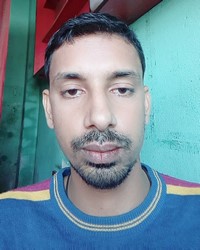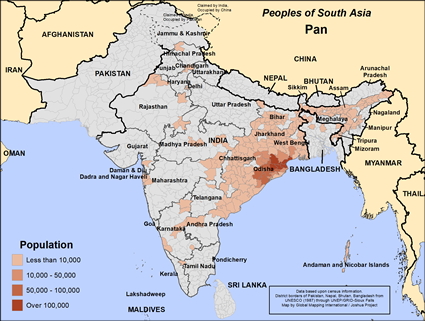Pan in India

Photo Source:
Anonymous
|

Map Source:
People Group data: Omid. Map geography: UNESCO / GMI. Map Design: Joshua Project.
|
| People Name: | Pan |
| Country: | India |
| 10/40 Window: | Yes |
| Population: | 1,373,000 |
| World Population: | 1,377,500 |
| Primary Language: | Odia |
| Primary Religion: | Hinduism |
| Christian Adherents: | 0.40 % |
| Evangelicals: | 0.20 % |
| Scripture: | Complete Bible |
| Ministry Resources: | Yes |
| Jesus Film: | Yes |
| Audio Recordings: | Yes |
| People Cluster: | South Asia Dalit - other |
| Affinity Bloc: | South Asian Peoples |
| Progress Level: |
|
Introduction / History
Odisha, India is the primary home of the Pano or Pan people. Many Pans also live in other parts of India such as West Bengal, Jharhand and Andhra Pradesh. They are distributed in the Balasore, Cuttack, Puri, Dhankanal and Ganjam districts of Odisha and on the border to West Bengal and Bihar. Most speak Odia, the language of Odisha. Others speak Hindi. They have occupational sub-groups known as Bunapano and Dhulipano. Many use Shamal as their surname.
What Are Their Lives Like?
They are non-vegetarian and rice is their staple food. The majority live by farming or fishing. They take menial jobs because they are low class. They are divided into a number of lineages, which regulate marriage alliances and indicate one's ancestry. They have only one clan, the Nagasa. Their traditional and primary occupation is to serve as serfs to the land holding communities. However a few of them are engaged in private business, in cultivation, as daily wage laborers and as musicians.
What Are Their Beliefs?
Most Pan worship Hindu and village deities and participate in ancestral worship. They worship gods and goddesses such as Mahadev and Durga. Their village deities are Lakhmi, Mongla and Jogmaya. Jogmaya is considered to be their chief deity. The Pan have presumed kinship with other communities such as the Mahaprasad, Mokar and the Maitra. They act as musicians during the worship and life cycle rituals of other communities.
What Are Their Needs?
Pan people have faced considerable health problems related to contaminated water, poor diet, respiratory infections and lack of medical care. Several charitable groups have made efforts to help them with these problems. This has helped, but most of them still face these same problems.
Prayer Points
Pray for the salvation of the Pan people and that God may send several Christian workers to work among them and meet their spiritual and physical needs.
Pray for community development programs and opportunities to hear the gospel message through different means.
Pray for open hearts to the gospel message.